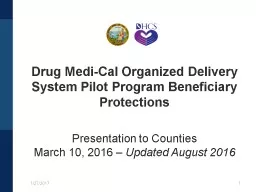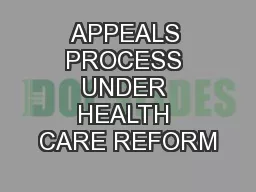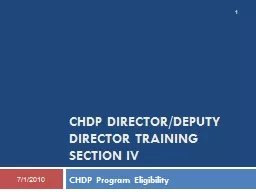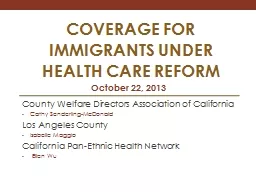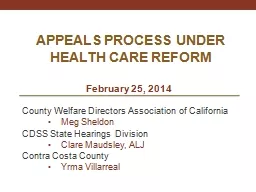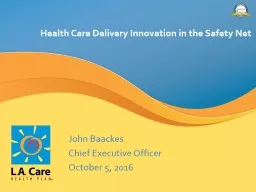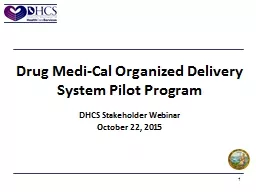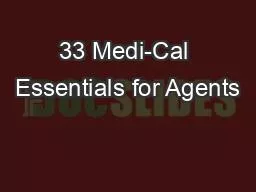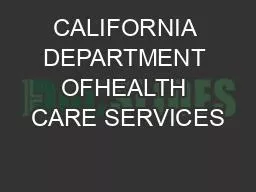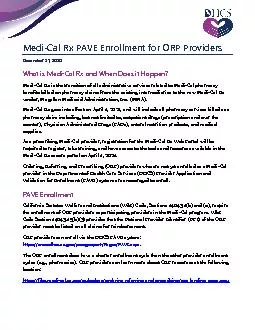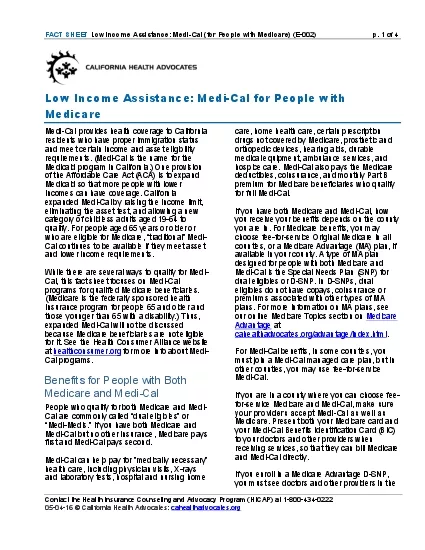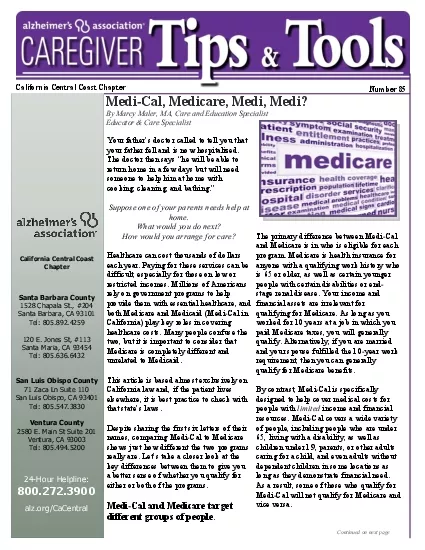PPT-1 1/27/2017 Drug Medi -Cal Organized Delivery System Pilot Program Beneficiary Protections
Author : test | Published Date : 2018-09-25
Presentation to Counties March 10 2016 Updated August 2016 2 1272017 Managed Care Implications Federal Managed Care Requirements Regulations Enrollee Rights and
Presentation Embed Code
Download Presentation
Download Presentation The PPT/PDF document "1 1/27/2017 Drug Medi -Cal Organized De..." is the property of its rightful owner. Permission is granted to download and print the materials on this website for personal, non-commercial use only, and to display it on your personal computer provided you do not modify the materials and that you retain all copyright notices contained in the materials. By downloading content from our website, you accept the terms of this agreement.
1 1/27/2017 Drug Medi -Cal Organized Delivery System Pilot Program Beneficiary Protections: Transcript
Download Rules Of Document
"1 1/27/2017 Drug Medi -Cal Organized Delivery System Pilot Program Beneficiary Protections"The content belongs to its owner. You may download and print it for personal use, without modification, and keep all copyright notices. By downloading, you agree to these terms.
Related Documents

